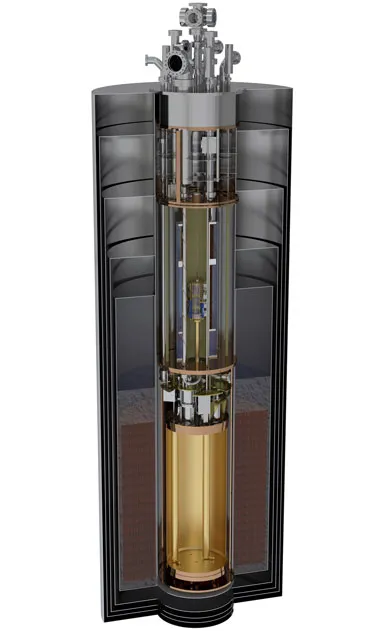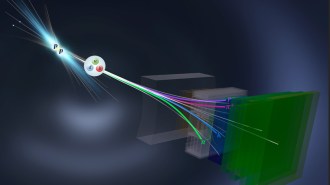The search for mysterious dark matter underdogs steps up
Hypothetical subatomic particles called axions get their chance to shine

EVERY AXION HAS ITS DAY Physicist Gray Rybka of the University of Washington in Seattle and colleagues have created a detector sensitive enough to potentially find hypothetical dark matter particles called axions.
Mark Stone/University of Washington
- More than 2 years ago
Scientists playing peekaboo with dark matter have entered a new stage of the game.
For the first time, physicists are snooping on some of the likeliest hiding places for hypothetical subatomic particles called axions, which could make up dark matter. So far, no traces of the particles have been found, scientists with the Axion Dark Matter Experiment, ADMX, report April 9 in Physical Review Letters. But the researchers have now shown that their equipment is sensitive enough to begin searching in earnest.
An ethereal substance that makes up much of the matter in the universe, dark matter is necessary to explain the motions of stars within galaxies, among other observations. Scientists don’t know what dark matter is, but axions, extremely lightweight particles that may permeate the cosmos, are one of the major contenders.
Most past searches for dark matter particles have focused on a different candidate particle, known as a weakly interacting massive particle, or WIMP. But those efforts have so far come up empty (SN: 11/12/16, p. 14). Now, the spotlight is on the underdog axions.

“We have to make sure we are considering all the possibilities,” says theoretical physicist Matthew Buckley of Rutgers University in Piscataway, N.J., who was not involved with the new result. Axions, he says, are a plausible candidate for dark matter.
Axions would produce incredibly feeble signals, so pinning down evidence for the minuscule particles is no easy undertaking. But ADMX, located at the University of Washington in Seattle, is now up to the task, says ADMX member Aaron Chou, a physicist at Fermilab in Batavia, Ill. Previous experiments have searched for axions, but those efforts weren’t sensitive enough to have a good chance of detecting the particles.
“It’s an experimental tour de force; it’s amazing work,” says theoretical physicist Helen Quinn of SLAC National Accelerator Laboratory in Menlo Park, Calif., who was not involved with the research.
ADMX uses what is essentially a supersensitive radio, isolated from external sources of radio waves and cooled to temperatures near absolute zero (‒273.15° Celsius). Scientists use the apparatus to search for axions converting into radio waves in a strong magnetic field. If axions exist, they are expected to interact with photons, particles of light, from the magnetic field. In the process, they would produce radio waves at a frequency that depends on the axion’s mass, which is unknown. Like scanning the dial for a good oldies station, scientists will gradually change the frequency at which they search, trying to “listen in” on the axion signal.
While the new study came up empty, scientists scanned only a small range of frequencies, ruling out some possible masses for axions, from 2.66 to 2.81 microelectron volts. Those tiny masses are less than a billionth of an electron’s mass. In the future, ADMX will study other possible masses. “There’ll be a lot of excitement in the next few years,” Chou says. “A discovery could come at any time.”







